I’ve been sharing here about the loss of my mom this past year. I haven’t really described more about my actual relationship with my mom, and one thing I’ve left out is how complicated and strained it has been over the years. That might be something i explain more in time. For now, what feels important to offer is that i speak about the Mother Wound from my own first-hand experience.
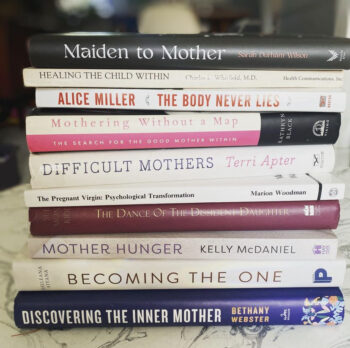
For so long, i saw her as the villain or cause of my own suffering. And while that may be true to a degree, it is more than that. She wasn’t my enemy: in fact, all she wanted was the best for me. My mom was a product of a time, like we all are. Her time of mothering was very different from mine, both individually and collectively. I always tell folks that i have a plethora of books; shelves full of life guides, human development texts, and suggestions on how to be a good parent. My mom didn’t have those books (and not because she didn’t like to read – she read more books in a month than anyone else), it’s because the books didn’t exist.
It’s only now that I’m starting to see her in a new light. One with more clarity, grace and understanding.
For instance, she moved across the world at the young age of 20. I always took that for granted. Mainly because she was always an adult to me. And yet she was just a baby adult herself coming across the ocean, with no shared language to help her. English was a language she learned only after arriving to the country i now call home.
And that became a big part of her messy transition into life in Canada and adulthood, and it shaped her experience. To now realize just how alone she was makes my heart break for her: To have to do that all without family and her own mother, and then to become a mother herself without access to hers. She came here for good reasons, and yet no one should face major rites of passage alone. In fact, there is research that shows when we do go through this alone, it can lead to psychosis. She had no direct models of what a mother is, or at least ones that were the role models she needed. She had to mother and live without a village herself.
I don’t know all her stories and now I never will. I do know that she mothered her siblings and never really had the childhood i took for granted myself. She never got to be a care-free teen, so when i wanted that for myself, it really pushed her limits. She had several miscarriages before and after me. These were losses that metabolized in her body, mind and soul. She was alone in this experience as well.
And so, she carried the mother wound in her. It was absorbed in me as the seed I was.
WHAT IS THE MOTHER WOUND?
There is already a lot of literature on the mother wound, so I don’t want to re-invent the wheel. Bethany Webster shares so much wisdom. care of my time is in fact another way I heal my mother wound: I am enough as i am, and i don’t have to prove that to anyone else. Instead, I want to focus on what can heal. I share my first-hand experience having done some work.
The mother wound is an archetypal paradox where those of us who are socialized as women are taught that our innate gift and role in the world is to be a mother*. Since it is assumed to be innate, we are not taught this. And then we fail: We either don’t mother in a way that is aligned with our children’s needs OR we martyr ourselves and lose our self. We are forced to believe we are not good enough either way.
*Anyone who is not a mother to children whether it’s challenges/ infertility or choice are also put into this paradox. It is not just about our own relationship with our mom, and we don’t have to be mothers. And it’s also important to note that not all caregivers who mother identify as mothers or women. And the Mother Wound can impact men.
So, in short, patriarchy and capitalism created this wound in us.
Let me be clear: It is not about blaming your own mom, and not all wounds look the same.
It is a paradox or dilemma of choosing ourselves over our children. We are never good enough. We live vicariously or we are selfish. We are not good enough as mothers if we fail and not worthy enough as humans if we don’t become mothers. In this prescribed motherhood, we continue this internalized sexism story that tells us our mother part is the most important part.
The mother wound is a part of a complex intergenerational cycle of trauma inherited from one generation to the next. Dr. Oscar Serrallach is a doctor who supports families. He wrote a whole book on postpartum depletion so I’m glad he describes the mother wound as “the pain and grief that grows in a woman as she tries to explore and understand her power and potential in a society that doesn’t make room for either, forcing her to internalize the dysfunctional coping mechanisms learned by previous generations of women.”
This belief leads to oppressive and impossible standards that expects us to:
*Constantly prioritize others’ needs, at the expense of our own
*Be the primary default caretaker of the household
*Sacrifice our own dreams in preference for what is best for the family
*Do it all well and appear at at ease and attractive or ‘ladylike’
*Relinquish our needs and burnout by focusing on our children – being tired means we are doing the work
This paradox teaches us that we will never be good enough. Since it comes from a patriarchal model of worth, these standards for women are not sustainable because we were meant for more, but the male leaders 400 years ago felt intimidated and feared the power women, midwives, witches, and holy women had.
My mother died and my wound is still healing, but i have done the work to know what i need. That’s why it’s not just my mom, and our patriarchal society continues to keep the wound ‘alive’ vs scarred over. So, the problem is not mothers not being good enough, or not juggling the mental load of life well, but rather who created this social construct and who benefits from it most.
Some rules are meant to be broken. Especially when the pain that is caused can metabolize in our bodies for generations.
THE IMPACT OF THE MOTHER WOUND
Ultimately, the impact of this type of wound can lead to deeply embedded limiting beliefs about ourselves. The wound can manifest in many ways, mainly connected to feelings of shame, comparison, and an ever-present sense of guilt for wanting something different than we have. We may also feel the need to make ourselves small in order to feel any love at all. Here are some that i have noticed in my own journey:
Abandonment issues
I became Parentified and adultified as a teen because my mom learned some devastating news that was too much for her to handle and hold alone. And yet, she felt like she had no one to turn to, to trust, other than me. As the first-born daughter myself, this was a lot for me to take on. And i didn’t know how to say no. I couldn’t say no because i was afraid of her anger, and also because i was afraid of losing her attention. It led me to start chasing love and approval in my relationships, especially intimate ones. I also learned that my own feelings were not nearly as important as hers, and my needs were secondary. I then learned to bottle them up and luckily found poetry and journal writing as a place to unpack them. Not all of us with emotionally immature parents are this lucky. Clearly, this informed my path to become a psychotherapist in a big way.
For many, abandonment issues like this lead to attachment wounds, low self esteem, codependence, being or feeling too needy. We become avoidant in our attachment, or at times disorganized because of the polarizing needs at play – to feel cared for and to not be able to trust
Healing Balm: If this speaks to you, track what you need and give yourself it. You don’t have to be the one that meets your needs all the time by yourself – be a steward of your needs, ask for them to be heard and see who can meet them. Healing takes time, just like our physical wounds. We need to keep taking care of them, so that they scab over. Ask for help and get a felt sense of receiving it when you do. That means really feeling into the experience of having needs met. Doing this work moved mountains for me. I learned that my needs are valid and not too much, and that being human means we have needs.
Attachment Wound
I have talked about Attachment Theory a lot here. To get a better sense of it, go to my previous articles HERE or HERE. These wounds stem from emotional ruptures or wounds that come from a breakdown in trust. For instance, sometimes your parent shows up (be it after school, at a dance recital, or a community event). Often times, they don’t. This inconsistency leads to ambivalence or anxiety in the child – will they be here or not?
When we are ambivalent about our attachments to caregivers, we seek their attention as a form of connection. Sometimes, that means we intentionally (though subconsciously) self-sabotage things because it leads to attention. This perpetual loop keeps us stuck in insecure attachments with others. We say yes to people please, and then sabotage the plan when we worry that the person will leave us in the dust. We do the harm first because it hurts US less.
Healing Balm: Find people in your life that are Competent Protectors. These are folks (real or imagined) who you feel safe with because they have your back, and nourish you. They communicate and connect with you consistently. By doing this, we can heal our insecure attachment style and gain what is known as “Earned” Secure Attachment. It is not earned because we are now worthy – we were already worthy – but rather it is a testament that our attachment style is not static and can change, and heal. I have done this with my own intimate partner, and also with friends. I have created a composite Inner Guide who is a Part i turn to when i need to feel loved and seen.
Adult Relationships and Guidance
In Mother Hunger by Kelly McDaniel, she describes 3 pillars that are necessary to feeling loved: Nurturance, Protection, and Guidance. These pillars continue into adulthood. At times, we may be faced with the jarring reality that our mothers were present and nurturing when we were children. It is as adults that we are finding ourselves alone.
Maybe your mom was a great mom when you were a kid and now doesn’t know how to care for you as an adult – we still need to be cared for and eldered. Our needs have evolved but that does not mean we need our caregivers any less. Adult children still need a wise elder to guide the way. We need guideposts to help shine the light. Our needs have evolved from the physical care of providing us with clothing and food. Now what is needed for survival are the emotional and spiritual sources of vitamins for growth. The need for guidance does not stop.
For many, there is a rude awakening when we notice that the mom we had as a child is not the same person as the adult we have a relationship with now. Of course, we need to also recognize that our parents have also evolved into new archetypal stages of life too. My mom was no longer in her Mother stage, but rather a Crone. So that means she wasn’t actively caring for anyone else. That doesn’t make the need any less important.
Healing Balm: Find an Elder and have a healing corrective emotional experience. We are surrounded by other adults but not necessarily elders. One thing that can help is to have a reparative relationship with someone in your life now. They can’t change what happened to you before (i wish) but they can give you what you need now. Maybe they can sit with you as you have your hard feelings. Or they tell you how proud they are of you. Or they can give you wisdom when you are in a liminal space. This creates new neural pathways in our brain, and ultimately act like a fuse that seals an old wound.
Legacy Burdens
Some of the things that your mom carries on her emotional backpack are not even hers. They are older than her too and she inherits them. We don’t just inherit our parents good genes and hand-me-downs. Their emotional baggage backpacks also get passed down via procedural learning and Limiting Beliefs. Maybe you are a perfectionist like your mom, or competitive, or have a high tolerance for poor treatment by others. Maybe you become rigid or too controlling as a protective mechanism. If that sounds familiar, these are things you learned by witnessing your parents displaying it for you. It’s like the broken statue that still holds centre stage on the dust-filled cabinet.
Maybe you don’t want to repeat your mom’s mistakes and also don’t feel like you can betray her. This is another paradox that is deeply connected to the mother wound. As Bethany points out “we don’t just bond with our moms but also her trauma and limiting beliefs.”
Healing Balm: Practice setting Boundaries. We need to stop repeating the ruptures that have been passed down. Maladaptive coping strategies and unhealthy conflict styles perpetuate this type of wound, so much so that they feel inherited in our DNA. In fact, it is learned and therefore can be unlearned. One great resource is Nedra Glover Tawwab’s book Drama Free: A Guide to Managing Unhealthy Family Relationships. Books like this are a testament that enough people have unhealthy and challenging relationships with their families, and that we deserve better.
Ancestral Trauma
Okay, this is a big one, and one that may feel daunting. It is not any less important. We can do this work in doable steps – to titrate the impact on us. Do you know that the egg that was first created in your grandmother? Think about that for a minute. Who was she, what time did she live in? What may have impacted her. This work is aligned with healing our Witch Wounds and legacy burdens. It’s important to share here because we are not that removed from the experiences of our ancestors. It an be the experience of war, poverty, enforced slavery, genocide.
Healing Balm: One way i do that is to first get to know the path that brought me here. Who were my ancestors, my foremothers? In Clarissa Pinkola Estes’ book, she shares that we need to know who came before us. It’s not to hold them in reverence (especially if they sucked) but rather to honour them as the makers of the line that brought us into being. This has been a journey all on its own for me. I am intentionally learning more about my grandmothers and mother line. I learned the names of my great-grandmothers only recently. My mom talked about them before, but to be honest, i never truly listened. Knowing this information is healing: I am the daughter my ancestors needed. Now that i know that, it means i don’t have to agree with their choices but accept them for what they had to endure at the same time.
If this is hard for you, books like It Didn’t Start with You, or What Happened to You are great resources to help explain this legacy and concept of intergenerational trauma.
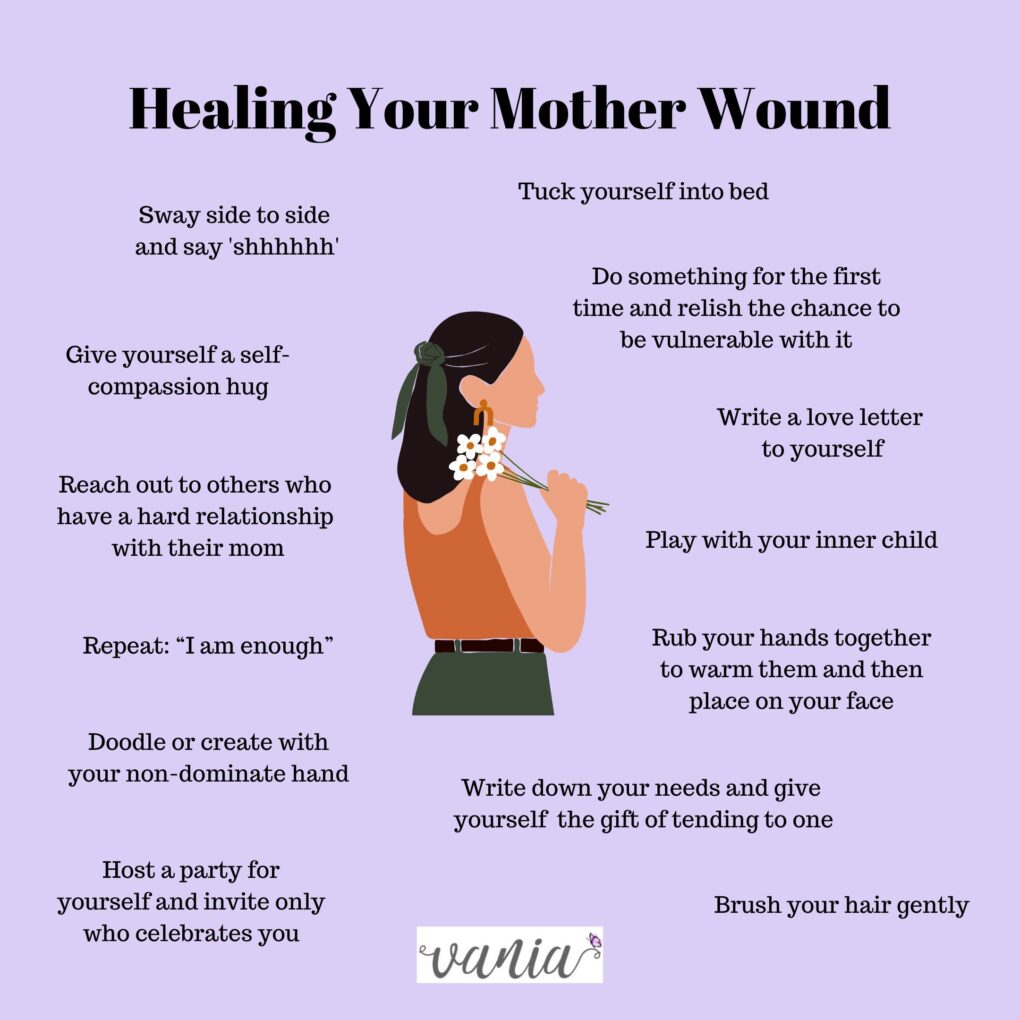
HOW TO START HEALING
We need to grieve for the mother or care we needed and didn’t get. Since grief is also something we are not literate about, this makes this healing work that much more challenging and necessary.
When we start tending to it, here are some things that heal: our sovereignty, our relationship to our body, Money literacy, the choice to have children and to parent with intention, and our relationship with Inner Child heals. There are many reasons to do this work, to actively address the wounds with loving care and attention. That ultimately heals our ancestral line, or internal parts (namely our Inner Child and Inner Critic), and it can shift the story of any future family we may have. Even if we do not become parents ourselves, as a community member in this world, our own healing has a domino effect on others.
Some of us may need to cut all ties with their mom, especially if they are toxic or continue to cause harm. Ultimately, we can’t expect others to change so even the individual work we do for ourselves can be just enough of a dose to create a ripple effect. There is alchemy in that.
Bethany Webster is at the forefront of leading this shift. She has been prolific in sharing her experience, by offering courses and community. From her, i learned of the 3 C’s concept to heal a mother wound trigger: Be calm compassionate curious to do something different now if you feel activated or stuck. For instance, let’s say you go home to see your parents. Your mom may try to show you that she loves you, but it is somewhat messy. It comes off as yet another judgement or critique. I find that learning new resources to address triggers to be very empowering. We may not always be able to challenge her directly, at times it may not be safe or productive. Instead, do something that helps you self-mother the part of you that is triggered.
*Be Calm as a foundation – learn ways to access your basic Universal needs to regulate your nervous system. What might you do that is self-soothing?
*Be Compassionate as a way of giving ourselves loving kindness, and honouring our needs
*Be Curious so that we can move forward with new options and capacity, having turned that wound into a scar
Ritual to Unleash and Surrender
I love rituals as they enhance a wish or intention. Let’s say you want to let go of an old limited belief, or maybe you want to commit to a new dream for yourself. What do you want to leave behind? One way to do this is to create a ceremony for yourself by bringing in the elements – Air, fire, water, and earth. This is a sacred way to either unleash yourself from a limiting belief or to surrender into a new way of being.
*Fire: Write a Dear John letter to an old internalized belief about yourself and burn it – cut that cord!
*Earth: Plant a seed (a real one) that symbolizes a new dream that is growing inside you
*Air: Scream into the air or whisper love notes to yourself when you tuck yourself into bed
*Water: Have a cleansing bath with essential oils and rose quartz – or lots of bubbles
Have you heard of Womb Healing Rituals? This is a beautiful way to tend to yourself. The practice helps you connect back to your own body and also release some emotional blockages and/or baggage. I love guided visualizations that lead me through a meditation. Here are two such ideas for inspiration if this speaks to you: Yoga for Womb Healing and a podcast episode from Herbal Womb.
Still wanting more inspiration and self-love?
I recently joined a new friend in an offering for Mother’s Day. It was called Unleash and Surrender: Healing your Mother Wound. We lead folks through some guided meditations, somatic and reiki exercises. Mostly, we shared space with others who also feel this wound in their life. Katelyn shares more about the Mother Wound on her website HERE. The replay is available if you want to give yourself a bit of self-love and mothering. The included playlist and journaling prompts are worth it alone.
When we combine the understanding of the Mother Wound and how it impacts us, that allows us room to do the work. This is the Unleashing. Only after this happens are we able to Surrender to this new version our ourselves, where our wounds have healed over and we are able to live a full life without being afraid of the scab breaking open again.
We do this for us, regardless if we are a mother or not. We deserve this.The Mother Wound is called that because the pain is something that continues into present day. So we need to heal it so that the wound can manifest into a scar.
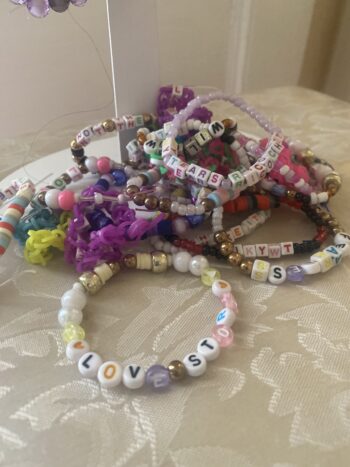


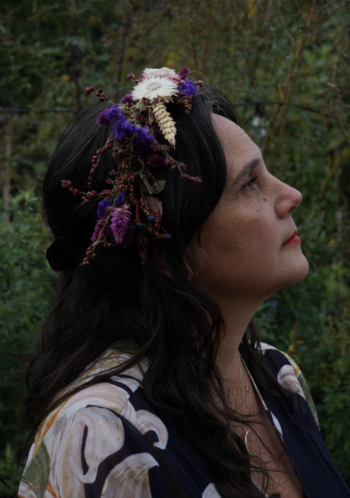
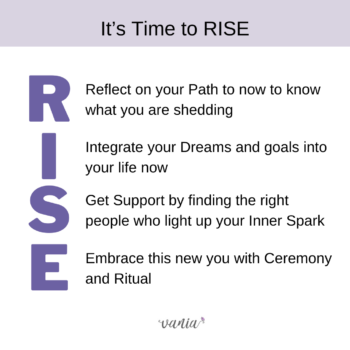
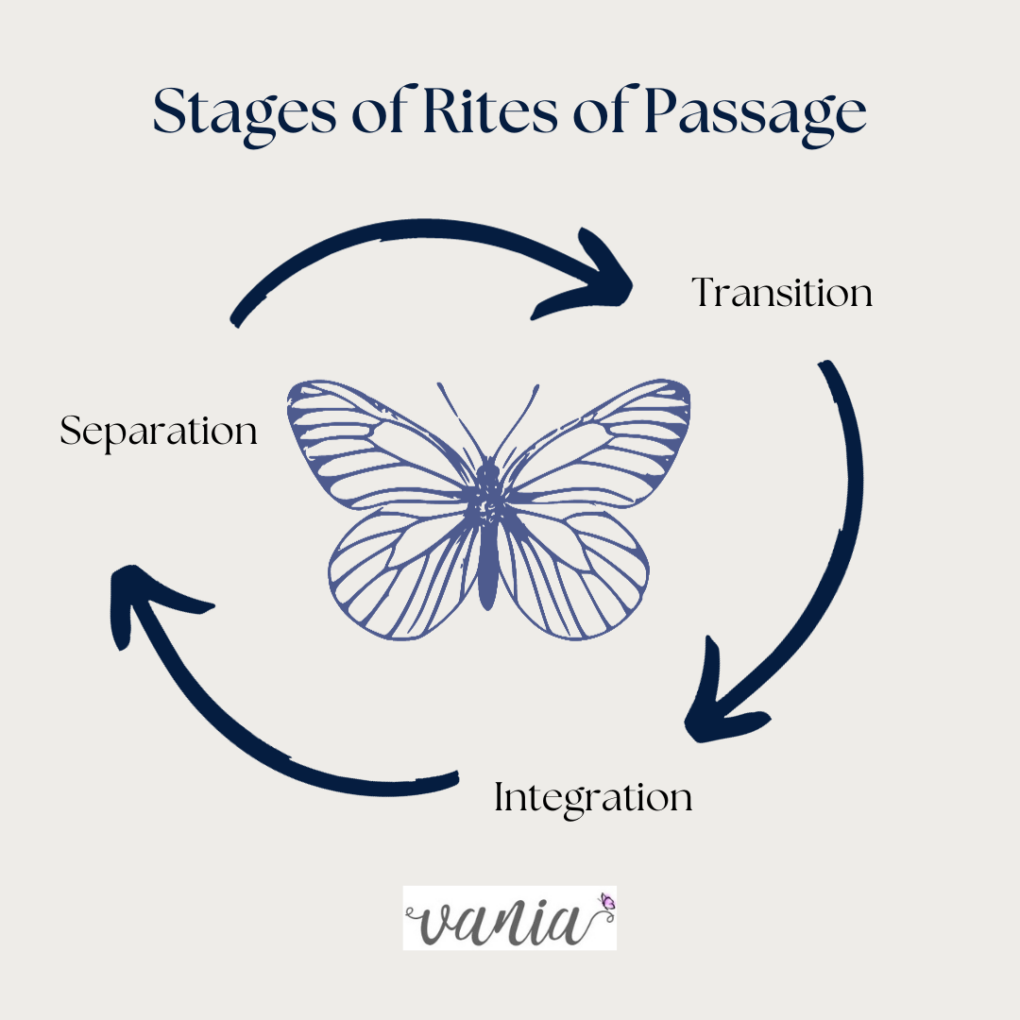
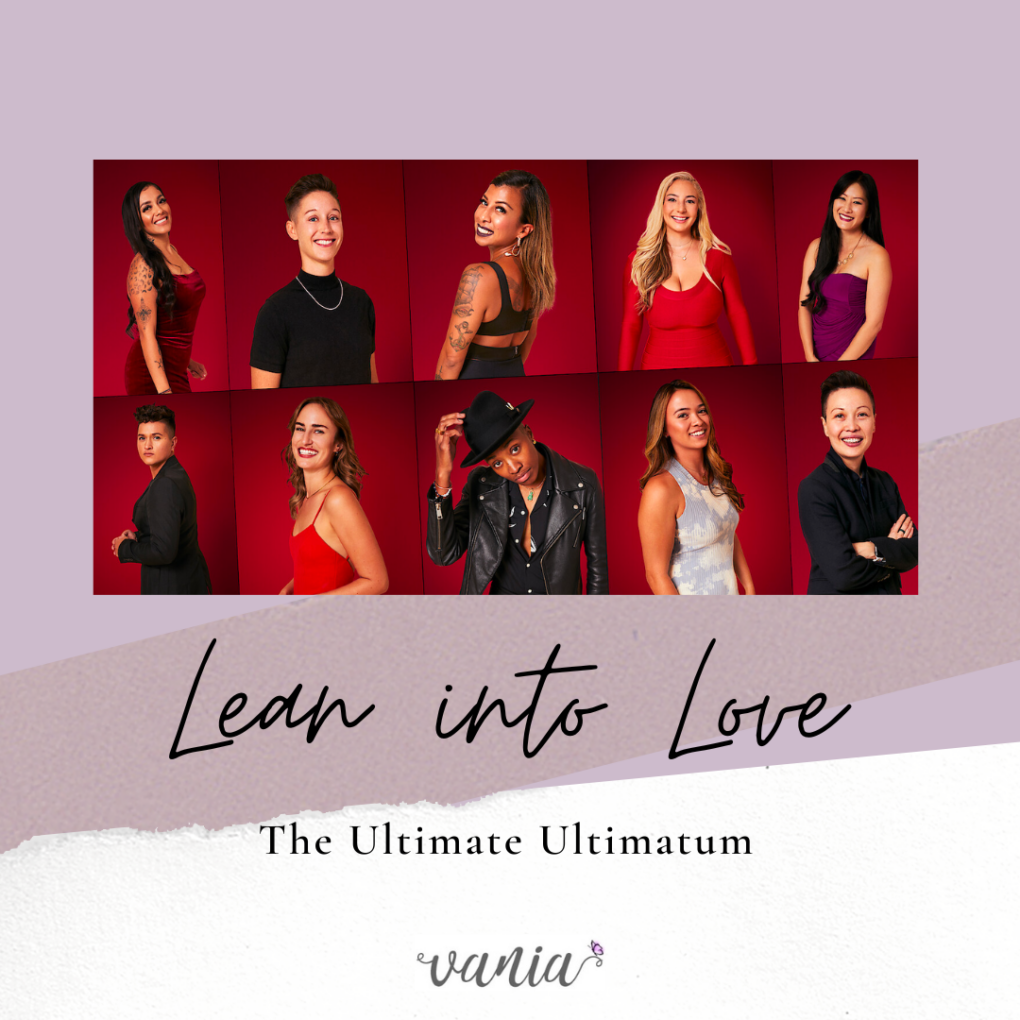 And yet when I saw not even a trailer, but just the title cover on Netflix of the new show
And yet when I saw not even a trailer, but just the title cover on Netflix of the new show 
